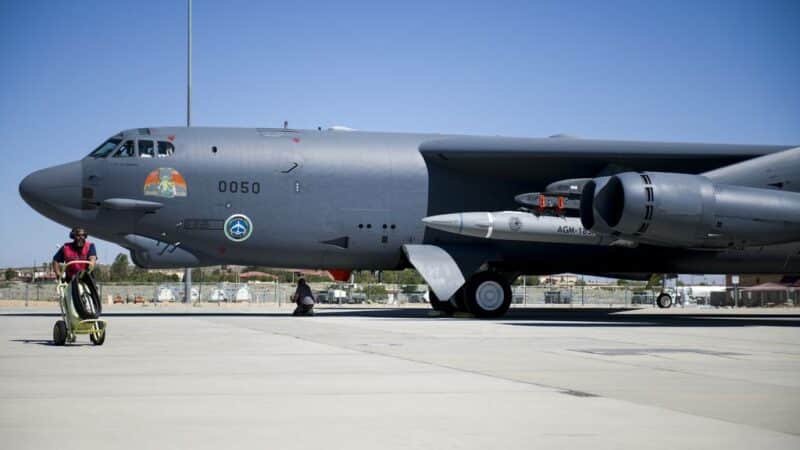In the middle of the electoral campaign for his re-election to the Kremlin, Vladimir Putin stunned the world of defense on March 1, 2018, when he announced, during a television interview, that the airborne hypersonic missile Kinzhal had entered service a few months earlier in the within the Russian Air Force. With a range of 2000 km, the Russian missile, which can be launched from the Mig-31K heavy interceptor or the Tu-22M3 long-range bomber, follows a semi-ballistic trajectory with significant evolution capabilities and a speed greater than Mach 5, making it particularly difficult to detect and intercept for traditional anti-ballistic systems such as the Patriot PAC 3, the THAAD or the Aster Block 1. In addition, its very high speed considerably reduces reaction time while maneuvering abilities decrease the chances of determining the intended target. Capable of carrying a conventional load of 500 kg or a nuclear load of 100 kt, the Kinzhal therefore constituted a weapon perfectly suited to preventive strikes or decapitations against NATO, without the carrier vector even needing leave Russian airspace.
Beyond the threat posed by the new Russian missile, which led to the launch of several programs including in Europe to detect and intercept such vectors, Vladimir Putin's announcement was also a profound humiliation for the American armies, which had lost the habit of seeing another country have weapon systems of which they themselves were deprived for 30 years. And as was the case in 1961 when the Apollo program was announced following the Russian successes in the space field, in 1967 when the discovery of the Soviet MIG-25 led to the design of the F-15, and in 1980 when the entry in service of the cruiser Kirov led the US Navy to modernize and recall to service 4 battleships of the Iowa class, the United States responded with pride and speed to this Russian provocation, launching almost simultaneously no less than 7 hypersonic missile programs, depending on whether they are rocket- or air-powered, launched from a land, naval or air platform, or developed by the US Army, the US Air Force and the US Navy.

The AGM-183A ARRW program for Air-Launched Rapid Response Weapon, was one of them, and as its name suggests, it is an airborne hypersonic missile composed of a rocket engine for the phase of launching, gaining altitude and speed, as well as a hypersonic glider for the descent and strike phase. The program was launched in August 2018, just 5 months after Vladimir Putin's announcement, and aims precisely to design a response to the Russian Kinzhal, whose performance in terms of speed and range it shares, and the constraints of implementation. , aboard the B-52, B-1B and B-2 heavy bombers or the F-15E heavy fighter. It only took just over 4 years for Lokcheed-Martin and the US Air Force to record the first successful full launch this December 9 from a B-52H of the 412th Test Squadron at Edwards Air Force Base in California.

75% of this article remains to read,
Subscribe to access it!
The Classic subscriptions provide access to
articles in their full version, and without advertising,
from 6,90 €.
Newsletter subscription
Register for the Meta-Defense Newsletter to receive the
latest fashion articles daily or weekly


[…] […]
[…] While over the last 25 years, a majority of American defense programs have been marked by bitter failures (replacement of the Bradley, RAH-66 Comanche helicopter, etc.), by programs with exorbitant costs (F-35, sub- Sea sailorswolf) and technological impasses (Zumwalt destroyers, LCS corvettes), all generating monumental additional costs without allowing the armies to effectively undertake their modernization, it took barely more than 5 years to give substance to several of these hypersonic programs, such as the HAWC (Hypersonic Air-Breathing Weapon Concept) airborne hypersonic missile developed by DARPA for the US Air Force, which recorded several successful tests in 2022, or like the AGM-183A ARRW program for Air-launched Rapidly Respons Weapon developed by the Air force and Lockheed-Martin which, after several failures, managed to carry out a complete hypersonic flight sequence in December 2022. […]